Conscious Capitalism
Liberating the Heroic Spirit of Business
John Mackey and Raj Sisodia
Harvard Business Review Press 2013
pp.334.
Talking about the limitations and the potential of
capitalism is the flavor of the season. The turmoil in the financial sector,
its ramification across geographies; the long road to recovery has led to
questions about the philosophical underpinnings of market-capital based model.
Conscious Capitalism is to be examined in this context.
Contemporary writings have three strands of arguments
in defining enterprises with a conscience. These strands of equitable and
humane face of capitalism had started emerging much before the crisis; but the
context for examining these models is important in the post crisis era.
The first strand does not question the basic structure
of capitalism. It accepts the philosophical underpinnings, but argues for
tweaking. The tweaking is articulated as transparency; disclosure of interests;
independent oversight; and better corporate governance practices. This strand
looks at failures as failure of governance than as an inherent philosophical
flaw.
The second strand argues for alternative forms of organization.
In the past, the alternative to capital based enterprise was co-operatives, a patronage
based enterprise. There are not-for-profit entities that do not distribute any
residual claims; not having “maximizing return on capital” as the core purpose.
A new dimension in this strand comes from Muhammad Yunus as “Social Business”
which ring fences profiteering, while allowing nominal investments to be taken
out.
Conscious Capitalism falls into the third strand that
accepts the basic framework of the capital centric model, but would want it to
be accountable on other parameters. This is the clutter of social enterprises.
Customer centricity, ecological sustainability, ethical practices, employee engagement,
and patient capital without a compromise on the financial returns are the
features of such enterprises. Depending on the type of business, entrepreneur
and investor, the focus on these capital plus factors would change.
The authors provide a framework for “conscious”
capitalism by integrating four aspects of the business: management of culture,
leadership, articulation of purpose (beyond earning profits) and integrating
the stakeholders. The basic message is that if you do no evil, your business
will survive and prosper; earn competitive returns without guilt. A large part
of the book is about the business of Whole Foods Market (WFM) and the choices
that the firm had to make at various points in time. The authors also draw from
the experiences of other “Conscious” businesses like the Tatas, Posco, Walmart,
Patagonia and Southwest Airlines. The businesses which are classified as
“conscious” businesses have had their share of controversy.
 The folklore of employee centricity of the Tatas in
the aftermath of the Mumbai terrorist attack is used as an instance to show the
consciousness of the Tatas. However, Tatas are not just about Taj Hotels. A
difficult situation of larger ethical dilemma at Singur is not touched. Or that
of Posco’s land acquisition process as a “conscious” capitalist? Does Walmart’s
zero waste to landfills aspiration (p.149) make it a conscious capitalist while
literature suggests insensitive handling of workmen healthcare benefits that
were “outsourced” to the State!
The folklore of employee centricity of the Tatas in
the aftermath of the Mumbai terrorist attack is used as an instance to show the
consciousness of the Tatas. However, Tatas are not just about Taj Hotels. A
difficult situation of larger ethical dilemma at Singur is not touched. Or that
of Posco’s land acquisition process as a “conscious” capitalist? Does Walmart’s
zero waste to landfills aspiration (p.149) make it a conscious capitalist while
literature suggests insensitive handling of workmen healthcare benefits that
were “outsourced” to the State!
The middle ground argument has thick borders between
what is acceptable and what is not. A practice could become desirable on the
basis of a strong argument. Take this quote:
“people ask us, ‘Why does WFM sell some foods that aren’t particularly
healthy?’” The justification is “Ultimately
our customers ‘vote with their money’ every time they shop. Just as, over time,
they have voted for more and more organic foods, we hope they will gradually
vote the unhealthiest foods out of our stores by choosing not to buy them”
(p.79). This is an argument that could easily be applied to Philip Morris. The
authors dismiss this “great” (as described by Jim Collins) company with the
question “what has been the net impact of
Philip Morris, the world’s largest tobacco company for much of the past
century?” (p.282). Storing not-so-healthy food in WFM is a customer choice,
while “the world is (not) a better place
because the company (Philip Morris) exists” (p.282).
While the authors sound optimistic that the future will
move towards “conscious” capitalism because of the inevitability of the reward
structure, it belies experience where WFM had to make compromises “At WFM, our salary cap has been in place
for about twenty five years (the ratio has risen
gradually over the years…. To stay reasonably competitive with the external
market”(p.94).
There are ways to make a persuasive argument. The most
impressive is to have a logical argument based on consistency. The least
impressive is the evangelical method that invokes the unknown; a sense of shame;
and guilt to convince. Unfortunately the book has more of the latter strategy
than the former. While there is a need to discuss and re-define capitalism in a
world that is getting excessively polarized, this book does not add to the
intellectual debate on the matter. It gives a series of convenient examples
retrofitted to the “Conscious Capitalism” argument. This is a problem when the
practitioner narrates his achievements and the academic takes a back seat
without distilling practices into economic arguments. The book loses because it
has more of John Mackey (co-CEO WFM) and less of Raj Sisodia (Professor at Bentley
University).









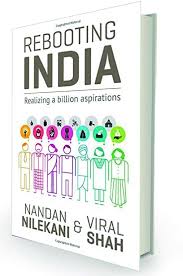








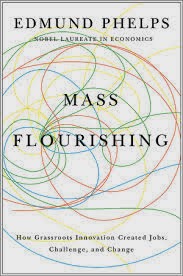









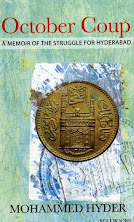

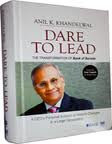









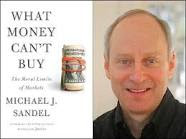


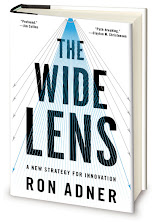

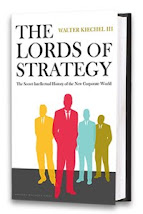











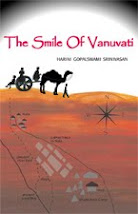


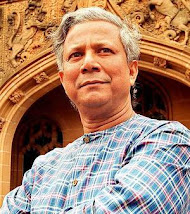








![Hyderabad: A Book [or two] and A Movie](http://3.bp.blogspot.com/_mxWA9ZVkKhQ/S0vnLAO90CI/AAAAAAAABYM/WgbSbAcAaEk/S214/luther1.0.jpg)

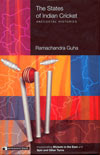





![Two Lives [and this is not about Vikram Seth]](http://1.bp.blogspot.com/_mxWA9ZVkKhQ/S0vjkyDYRvI/AAAAAAAABXM/mJGK-_gZiNg/S214/mansur.jpg)





No comments:
Post a Comment